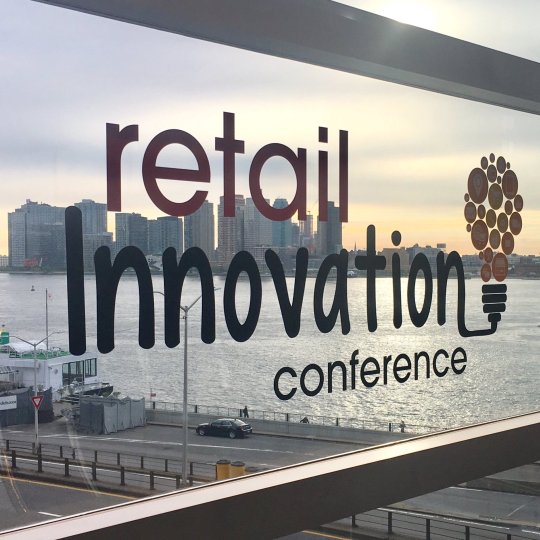
The 2017 Retail Innovation Conference, held May 9-10 at the Apella in New York City, brought together many leading retail thought leaders and executives, who shared insights into how they’re driving change through advancements in the customer experience, digital transformation or innovative technology implementations.
During the conference, 24 leading industry executives received Retail Innovator Awards for their efforts to embrace positive disruption.
Following are the top #RIC17 takeaways from the RTP editorial team:
Debbie Hauss, Editor-in-Chief: I am proud that we are able to bring together a diverse group of retail executives to learn from each other and collaborate. That is my key takeaway each year. That said, I was extremely impressed with the insights shared by the CIO panel that featured executives from A.C. Moore, Six Flags, The Vitamin Shoppe and PVH. Martha Heller also did an excellent job moderating the discussion that highlighted the importance of collaboration across the retail enterprise. We also had some fantastic retail executives share case studies, providing our audience the opportunity to learn from the best, including: Moosejaw’s Dan Pingree, Walgreens’ Wayne Duan, Fabletics’ Dustin Netral, Shinola’s Bridget Russo and several others. There are so many more speakers and sessions to acknowledge, so hopefully our audience will access our follow-up articles and reports to learn more.
Adam Blair, Executive Editor: My biggest takeaway from this year’s RIC came before the event actually started, during the Store Tours at the Westfield World Trade Center Oculus. Housed in an awe-inspiring physical space, the retailers there take varied paths to “wow” consumers: a long tail’s worth of product selection at Eataly (complete with the kind of detailed info that’s usually only available online); innovative products for sale (Montblanc’s writing-to-text tablet); and just the sheer joy of exploring new ideas (the Ford hub). It was also a reminder of how important it is for retailers, and those that cover them, to actually get out into the field now and then. You learn a lot simply by being a plain old shopper.
Glenn Taylor, Senior Editor: My time at #RIC17 showed me that in this day and age, retail is all about storytelling, and it’s more necessary than ever. Since it’s so easy to purchase products online, retailers must give consumers a reason to care about them enough to shop in their stores or on their e-Commerce sites. The presentation from Bridget Russo, CMO of Shinola, stood out because the company effectively carried out an ad campaign and a social campaign to sell 2,500 watches in its first week of operation. I think Shinola captured a lot of viewers with its “Made in Detroit” background, as it shows both an investment in American manufacturing and a willingness to take a chance on a city that is still trying to bounce back commercially and financially. Russo also revealed that the company’s brick-and-mortar strategy is based on activating the shopper’s five senses whenever they walk into a store, giving all of its 24 stores a unique look and feel so that no shopping experience is the same. While the products and positioning also certainly contribute to the retailer’s success, Shinola has shown an ability to create a brand that gives consumers a reason to return.
Klaudia Tirico, Features Editor: There were so many great takeaways from this year’s event that it’s hard to pick just one! I was, however, pleasantly surprised with the presentation from Moosejaw’s Dan Pingree. I have to admit, I’m not a Moosejaw customer, so I didn’t know much about the retailer’s unique (and hilarious) marketing strategies. I love companies that don’t take themselves too seriously, and Moosejaw is no exception. For example, the retailer once offered a “break up service” that allowed customers to ask Moosejaw to call a significant other and literally break up with them. It was a really out-of-the-box way to gain customer acquisition. Obviously, these tactics don’t work for all retailers, but it was fascinating to learn about how Moosejaw differs from its competitors (which are pretty big players like REI). Moral of the story: find something unique about you company — such as a twisted sense of humor — and use it to your advantage. Just be sure to prepare for backlash (Moosejaw had plenty and they’re still thriving, so it’s OK!).






